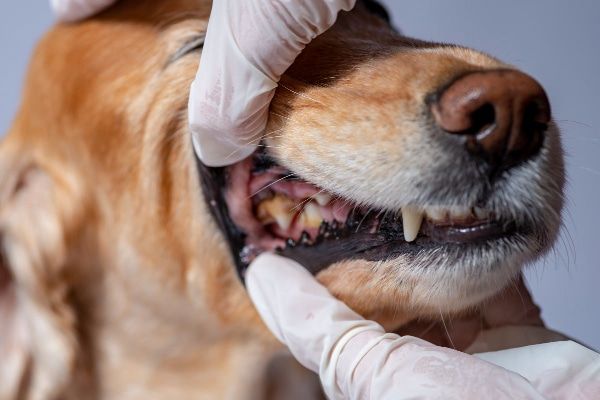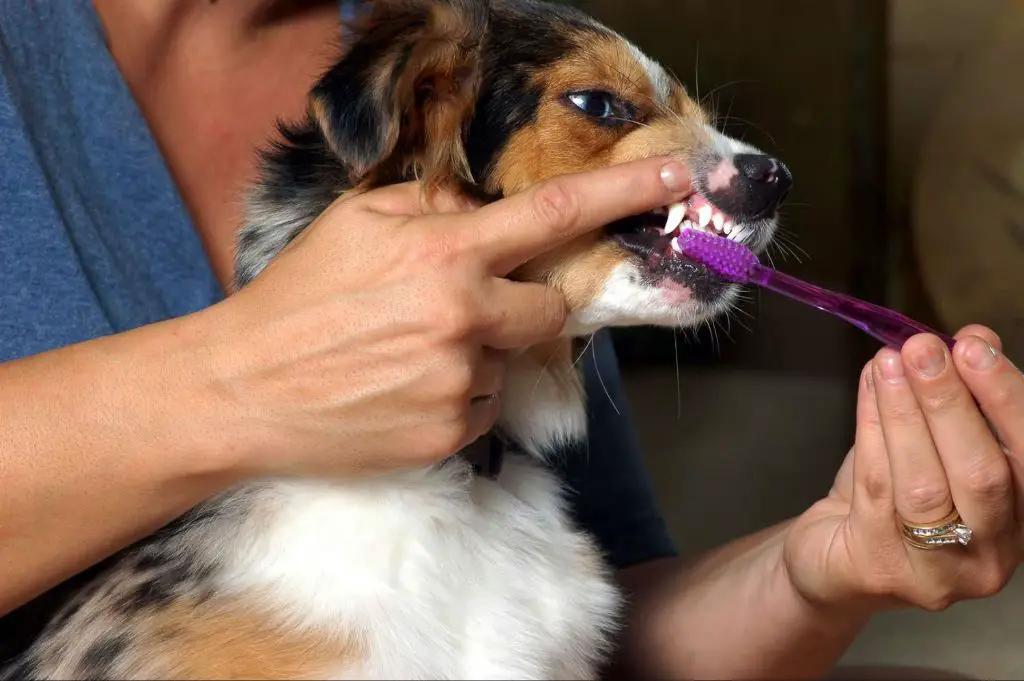Introduction
The typical life expectancy of dogs can range quite a bit depending on their breed and size. Smaller dogs tend to live longer than larger breeds. However, there are many factors that impact how long dogs live, including dental health.
A dog’s teeth play an important role in its overall health and life expectancy. Proper dental care allows dogs to adequately chew food, avoid dental disease, and prevent other health issues. Dogs with significant dental disease or tooth loss may suffer reduced life spans if the problems go untreated.
This article will provide an overview of how dental health affects dog life expectancy. It will look at the benefits of good dental care and what owners can do to promote their dog’s longevity.
Typical Dog Life Expectancy
The average life expectancy for dogs is between 10-13 years. However, there is significant variation depending on the breed and size of the dog.
Smaller dogs tend to live longer, with toy and small breed dogs often living 12-16 years. Medium breed dogs live on average 10-13 years, while larger breed dogs typically live between 8-10 years.
Some breeds are known for their longevity, such as Chihuahuas, Jack Russell Terriers, and Toy Poodles, living upwards of 15-20 years. On the other hand, large breeds like Great Danes, Irish Wolfhounds, and Mastiffs often have shorter lifespans of just 6-8 years.
In general, smaller dogs live longer than larger dogs. This is likely due to faster metabolisms in small dogs compared to giant breeds. Overall though, proper dental care, healthy diet, exercise, and regular vet visits can help extend a dog’s lifespan, regardless of its size.
Importance of Teeth
Teeth play a critical role in a dog’s ability to eat and thrive. Dogs use their teeth to bite, chew, and tear food. Without healthy teeth, dogs cannot properly break down food in their mouth. This makes it difficult or even impossible for them to obtain adequate nutrition from their diet.
Dogs have different types of teeth that serve different purposes. The incisors at the front are sharp and used for biting and tearing. The canines on either side are pointed for gripping and shredding. The premolars and molars at the back have flatter surfaces designed for grinding food.
When dogs lose too many teeth or their teeth become diseased, their chewing ability is severely impaired. They may have trouble chewing dry kibble and instead only lick at their food. Without properly chewing and breaking down food, dogs cannot digest and absorb nutrients effectively. This can lead to malnutrition, weight loss, and other health issues over time.
Healthy teeth allow dogs to properly bite, chew, and grind their food. This helps them to extract the nutrients they need from their diet. Good dental health prevents malnutrition and related problems in dogs.

Dental Disease
Dental disease is extremely common in dogs and is the most frequently diagnosed health problem in canines. Periodontal disease, which affects the gums and tissue surrounding the teeth, impacts over 80% of dogs by age 3. Dental disease not only causes tooth loss and bad breath, but also pain, trouble eating, and systemic inflammation that impacts overall health.
Bacteria accumulate on the teeth and gums, forming plaque and tartar. This triggers inflammation and infection in the gums, known as gingivitis. As plaque and tartar spread under the gums, they damage the tissue and jawbone in a condition called periodontitis. Tooth roots become exposed and teeth may loosen or fall out.
These oral infections don’t stay isolated in the mouth. Bacteria enter the bloodstream and travel to major organs like the heart, kidneys and liver. Dental disease has been linked to damage and reduced function of these organs, high blood pressure, and a higher risk of heart disease. The systemic inflammation caused by gum infections also stresses the immune system.
By preventing proper nutrient absorption, worsening other health conditions, and increasing systemic inflammation, dental disease takes a major toll on a dog’s health. Poor oral health reduces a dog’s lifespan by up to 3-5 years on average. Maintaining good dental hygiene and having professional cleanings can help avoid these impacts of periodontal disease.
Benefits of Good Dental Care
Proper dental care is crucial for maintaining your dog’s oral health and overall wellbeing. Here are some of the main benefits of good dental care for dogs:
Professional Cleanings

Veterinarians recommend professional dental cleanings at least once a year. This allows the vet to scale plaque and tartar off the teeth, polish them smooth, and flush under the gumline. Professional cleanings remove bacteria and prevent periodontal disease.
Brushing Teeth
Brushing your dog’s teeth daily or several times a week will also help remove plaque before it hardens into tartar. Use a soft dog toothbrush and dog-safe toothpaste. Gently brush all surfaces of the teeth and along the gumline. This promotes healthy gums and freshens breath.
Dental Treats
Giving your dog specially formulated dental treats or chews can assist with cleaning between professional visits. The abrasive texture scrapes away plaque and tartar. Look for treats with the VOHC seal from the Veterinary Oral Health Council.
Extracting Damaged Teeth
As dogs age, their teeth are prone to infection, decay, and other problems that can be painful and jeopardize their health. Extracting damaged teeth is often recommended to improve quality of life and extend lifespan in dogs with severe dental disease.
Extraction should be performed by a veterinarian under general anesthesia. They will thoroughly examine the mouth to identify problematic teeth that are loose, infected, or causing gum inflammation. Any teeth that are fractured, extremely worn down, or otherwise compromised will be removed.

Professional extraction removes the entire tooth including roots. This prevents further infection of the socket and ensures full healing. The vet may prescribe antibiotics and pain medication afterwards.
Extracting damaged teeth eliminates sources of pain, swelling and bacteria in the mouth. This allows the gums to heal and reduces the chances of systemic infections spreading to vital organs like the heart, kidneys and liver.
Dogs who have extractions to relieve advanced dental disease tend to regain appetite and energy. Removing infected teeth can add years to a dog’s life by improving overall health and quality of life.
Signs of Dental Problems
Some common signs that a dog may have dental problems include:
-
Bad breath – Persistent bad breath or halitosis can indicate gum disease or tooth decay.
-
Discolored or broken teeth – Teeth that appear discolored, cracked, or chipped may have dental disease.
-
Excessive drooling – Increased drooling can sometimes signal mouth pain or discomfort.
-
Swollen or bleeding gums – Inflamed, puffy, or bleeding gums often occur with periodontal disease.
-
Difficulty eating – Dogs with dental pain may avoid hard foods, drop food from their mouth, or chew only on one side.
-
Pawing at the mouth – Pawing repeatedly at the mouth or face is a sign your dog may have tooth pain.
-
Loose or lost teeth – Advanced dental disease can lead to teeth becoming loose or falling out.
Paying attention to these signs and having regular vet dental checkups can help address problems early before they progress.
Breed Variation
Dogs come in all shapes and sizes, and their dental health can vary significantly across breeds. Certain breeds tend to have more dental issues due to the anatomy of their mouths.
Brachycephalic breeds like Pugs, Bulldogs, and Boxers are prone to overcrowding and misalignment of teeth due to their short snouts. This can lead to more plaque buildup, gum disease, and tooth decay.
Small breeds like Chihuahuas and Yorkies have tiny mouths and teeth that are crowded. Their teeth are more likely to become misaligned and collect plaque between them.
Large and giant breeds like Great Danes have sizable jaws with large teeth. While they have more room, their teeth often grow close together, making them more susceptible to periodontal disease. The sheer size of their teeth also makes them more prone to fractures.
Herding breeds like Collies and Australian Shepherds have narrow muzzles that don’t provide enough space for their teeth. This results in crowding, misalignment, and subsequent dental problems.
In contrast, dogs with wider jaws and nostrils like Labrador Retrievers have straighter, well-aligned bites and fewer dental issues. Their teeth fit properly in their mouths and have enough space between them for cleaning.
While general breed tendencies exist, each dog is an individual. Proper dental care tailored to your dog’s specific needs is key to ensuring good lifelong dental health regardless of breed.
Diet and Lifestyle Factors
A dog’s diet and lifestyle habits play a major role in supporting dental health. Hard kibble and treats help clean their teeth and exercise their jaws. Chewing on bones, toys, and other objects also helps scrape away plaque and tartar. Owners should look for dog food and treats made specifically for dental health. These contain ingredients that gently clean teeth and freshen breath. Avoiding soft, sticky foods that cling to teeth is also recommended.
Establishing a teeth brushing routine early in a dog’s life will promote good dental hygiene. Use toothpaste made for dogs and a soft bristle brush. Brush at least 2-3 times per week focusing on the gum line and all surfaces of the teeth. This removes plaque before it hardens into tartar.
Providing plenty of safe chew toys and participating in play that exercises the mouth and jaw is excellent for a dog’s dental health. Activities like fetching balls, tug of war, and chewing on appropriate objects help keep teeth clean. Owners should also schedule annual dental cleanings and checkups with their veterinarian.

Conclusion
In summary, proper dental care is crucial for a dog’s health and longevity. Poor dental health can lead to infection, pain, and tooth loss, which impacts a dog’s quality of life and ability to eat properly. With routine dental cleanings, exams, and at-home care, dogs can maintain good oral health well into their senior years. Extracting severely damaged teeth and providing dental treatment for disease allows dogs to live comfortably and thrive. A dog’s teeth directly influence its lifespan – with proactive dental care, dogs can achieve a typical life expectancy for their breed.
Dental care helps prevent plaque buildup, gum infection, and tooth loss. This allows dogs to comfortably chew food, avoiding malnutrition and weight loss. It also reduces bacteria in the mouth entering the bloodstream and negatively affecting major organs. With healthy teeth, dogs can happily eat, play, and live up to their expected lifespans. Proper oral care and hygiene should be part of every dog owner’s regular routine. By staying on top of a dog’s dental health, owners can add years of joy and quality life to a beloved pet.